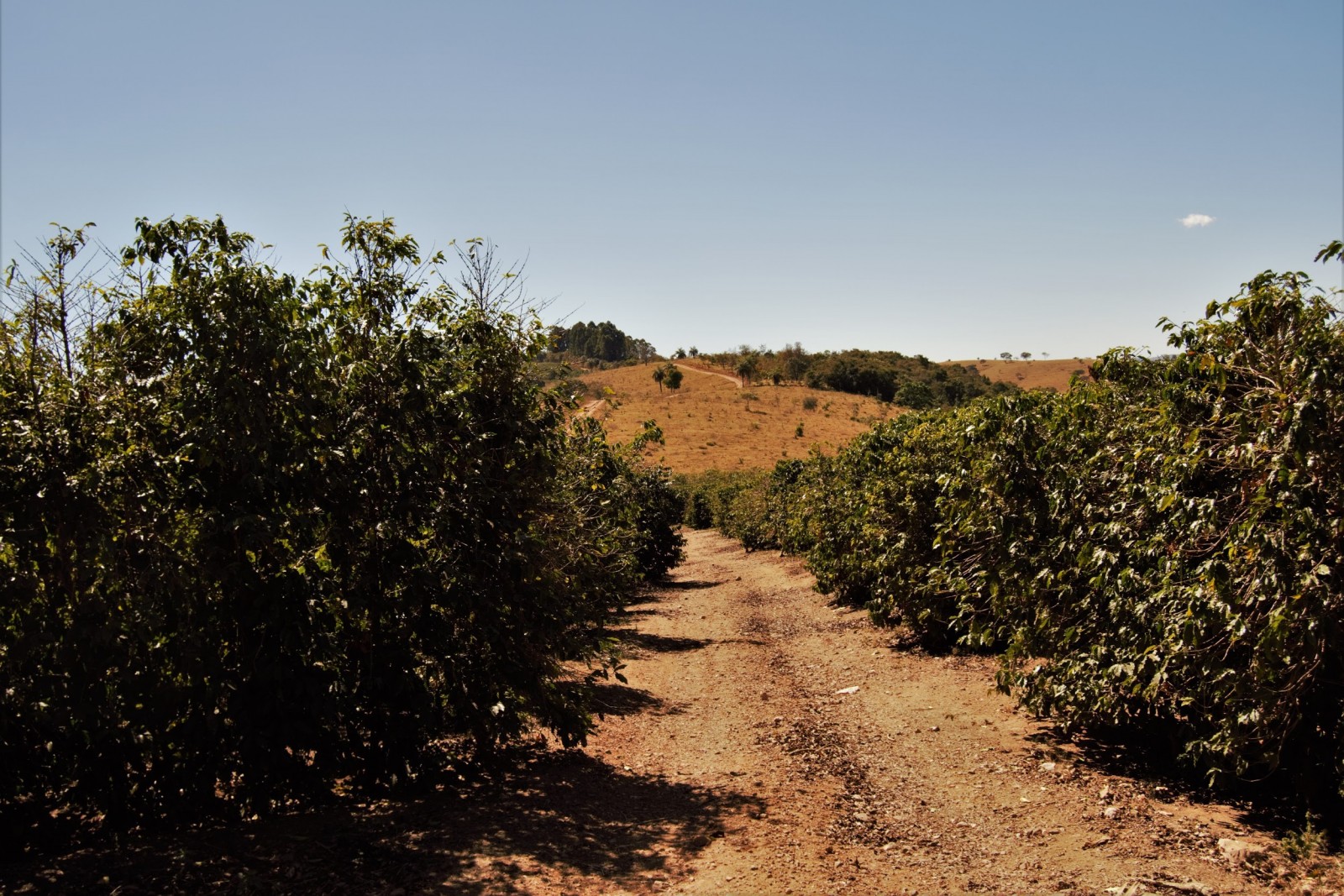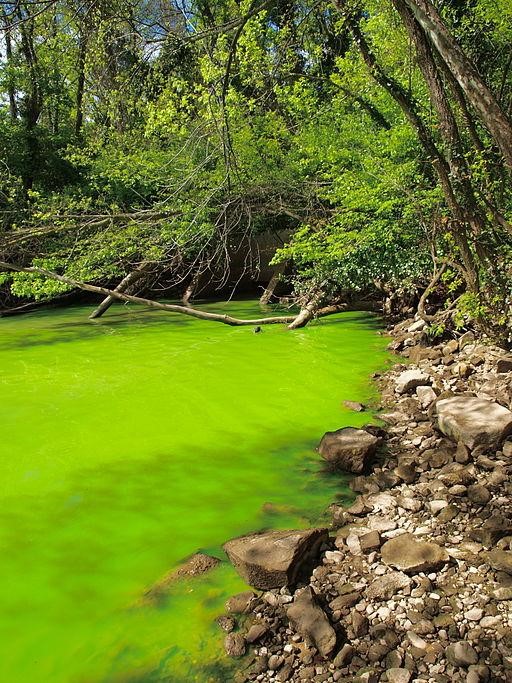 Take a look and try to identify anything around you that has phosphorus as a component.
Take a look and try to identify anything around you that has phosphorus as a component.
Phosphorus – the P element – is critical for life, like oxygen, nitrogen and carbon, being present in every plant, animal and bacteria. It constitutes cell walls, DNA, RNA and ATP, which transports energy to the brain. Our bones and teeth include phosphorus.
Now look again and you might see that phosphorus is more present in your daily life than you first imagined.
We obtain our phosphorus by eating plant- and animal-based food. Cattle obtain their phosphorus from feed, grazing and supplements. On the other hand, plants obtain phosphorus from the soil by their roots, transporting, absorbing and storing it to where it is needed. If a plant doesn’t get enough P, their growth is strongly affected, the formation of fruits and seeds decreases and crops yield less.

Image 1: Coffee crops in Minas Gerais, Brazil (photo: Bárbara Zambelli)

Image 2: Banana crops in Gran Canária, Spain (photo Bárbara Zambelli)
The phosphorus (P) present in soils is either natural or added by the use of fertilisers, manure and organic residues. Natural P exists on soils as a result of phosphatic bedrock weathering. As a geological feature, it is not evely distributed on the Earth’s surface and it can take a long time to form, such as a million years.
Why should we worry about phosphorus?
Phosphorus is a non-renewable resource that cannot be replaced or synthesized for plant nutrition. Moreover, it is one of the most reactive nutrients in the soil, being easily transformed into forms that are unavailable to plants. A study shows that about 90% of all the phosphorus mined worldwide is used for food production. According to USGS, 88% of all reserves are under control of 5 countries: Morocco, China, Algeria, Syria and South Africa. Morocco is by far the country with the largest reserve, holding 74% of the world’s phosphate reserves. Therefore, most of the countries rely on phosphorus imports to sustain agriculture. The scarcity scenario is not only physical but also geopolitical, economical and managerial.

Image 3: phosphorus mine (photo: Alexandra Pugachevsky, source)
The world’s population is growing steadily, projected to reach 9.7 billion people by 2050. In this sense, feeding almost 2 billion new mouths by 2050 is an increasing challenge. Growing food demand equals growing phosphorus demand.
The reserves of phosphorus will be depleted sooner or later. Some authors argue that the ‘phosphorus peak’ will happen pretty soon, in 2030, while others says that it won’t happen before 2100. There is no consensus because different studies are based on different methodologies and assumptions about demand and uncertainties about supply.
In this manner, to achieve SDG 2 and assure that everyone has access to safe and affordable food until 2030, we must change the way we use, source and distribute phosphorus among the global food production.
Another important issue is the biofuels production. With an increasing pressure to reduce oil consumption and greenhouse gases emissions, accordingly to the Paris Agreement on COP21, many countries are turning to biofuels, such as alcohol made from maize or sugarcane. These crops also needs phosphorus and use land that could be used for agricultural purposes.
What about the environment?
While phosphorus is a scarce resource vital for agriculture, it is also a pollutant of waterbodies. Not all phosphorus used as fertiliser is absorbed by plants. Some phosphorus stays on the soil and is later carried to streams, rivers and lakes. This anthropogenic input of phosphorus generates an anomalous concentration of P nutrient in water bodies, encouraging the growth of blue and green algal and causing algal blooms. The increase of nutrients and then algae and higher plants is called eutrophication.
Eutrophication can be toxic or deeply change the ecology of the waterbody. It produces many undesirable effects regarding human society, such as drinking water problems, decrease of seafood production and presence of toxins in drinking water and seafood.

Image 4: eutrophication at a wastewater outlet in Potomac River, Washngton D.C. (photo: Alexandr Trubetskoy, source)
Another environmental problem concerns mining tailings. Phosphatic rocks, as a result of its chemical composition, may contain notable amounts of naturally occurring radioactive materials. The process of converting the phosphorus ore to phosphoric acid (that can be used as fertiliser) or elemental phosphorus produces phosphogypsum as a primary waste by-product. These processes concentrate in the waste most of the naturally occurring thorium and uranium and its decay products, such as radium and radon. If proper attention is not given to this waste, it risks contaminating the air with radon gas (radioactive), and groundwater, affecting farmers and the wider population.
What can we do?
We have to think in ways to reduce the consumption, reuse and recycle.
A simple way for reduce phosphorus consumption is actually not a brand new idea. The answer relies on the symbiotic association between a small fungus and plants’ roots called ‘mycorrhizal’. The symbiose, which is a win-win relation, occurs when the fungus bounds to the roots. This fungus grows faster and it is more efficient on searching for phosphorus than the plants’ roots. So it provides phosphorus that were on the soil but could not be absorbed by the plant and, in return the plant nourishes it. Therefore, by using mycorrhizal association it possible to reduce the amount of phosphorus fertilisers needs of a crop, by enhancing its P absorption by the plant. In this video, Dr Mohamed Hijri explore use of mycorrhiza to optimise phosphorus use for agricultural purposes. Another way of reducing consumption would be encouraging diets that has fewer aliments that are phosphorus intenses, like meat and dairy products.
About reuse, we can think on reducing losses on the food chain, rubbish bin and animal manure, for example. Those are all sources of phosphate that cannot be overseen.
Concerning recycling, it is important to highlight the safe use of wastewater for agricultural purposes. The UN-Water has a project on this issue can be downloaded here. Its usage is already bigger than expected! Almost 100% the phosphorus eaten in food is excreted. The sewage treatment as a way to recover phosphorus present in human screta for agriculture, although controversial, is already being done in Sweden for example. Since the population is growing and a big part of it will settle down in peri-urban areas in mega-cities in the next few years, a big attention must be given to these places. They are becoming a ‘hotspot’ for phosphate production.
To know more about the phosphorus crisis and opportunities click here, here and here.

Xandão d'Auto
It is quite interesting, thanks for sharing!
Raphael
Amazing research work, Bárbara! Thanks for that! Keep on spreading knowledge! Cheers 😀